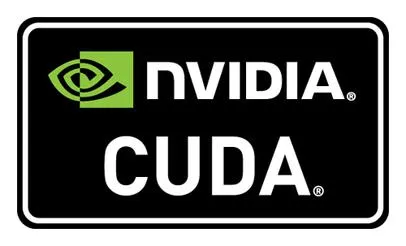
[Image 1]
Introduction
Hey it's a me again drifter1!
Today we continue with the Parallel Programming series around Nvidia's CUDA API to talk about Memory Management.
So, without further ado, let's get straight into it!
GitHub Repository
Requirements - Prerequisites
- Knowledge of the Programming Language C, or even C++
- Familiarity with Parallel Computing/Programming in general
- CUDA-Capable Nvidia GPU (compute capability should not matter that much)
- CUDA Toolkit installed
- Previous Articles of the Series
Memory Hierarchy
CUDA threads may access data from multiple memory spaces during their execution. More specifically:
- Each thread has its own private local memory
- Each thread block has shared memory that's visible to all threads of the same block
- All threads can access the global memory of the GPU
Host and Device Memory
The CUDA programming model assumes that the host and device maintain their own separate memory spaces, which are referred as host memory (CPU) and device memory (GPU). Through calls to the CUDA Runtime API its possible to manage the global, constant and texture memory spaces, which are visible to the kernels, and so the operations that will be run on the device/GPU. To get even more specific, the API includes calls for:
- device memory allocation and deallocation
- data transfer between host and device memory (bi-directional)
Unified Memory
In addition to the separate host and device memory spaces, its also possible to define a single unified managed memory. Managed memory is accessible to both the host and device, and visible as a single, coherent memory. Such memory helps elliminate the explicit need of mirror data between the host and device.
Memory Management API
Device Memory Allocation/Deallocation
Allocating memory on the device is as simple as calling the cudaMalloc() function. The function takes two parameters:
- A pointer to the allocated device memory
- The requested allocation size in bytes
int *A;
cudaMalloc(&A, N * sizeof(int));Deallocating the array from the previous example is as simple as:
cudaFree(A);Data Transfer Between Host and Device
Using cudaMalloc() we simply allocated memory for the specified size on the device. In order to transfer data from the host to the device, its necessary to also call the cudaMemcpy() function. The function takes in the following parameters:
- Destination memory address
- Source memory address
- Size in bytes to copy
- Type of transfer (cudaMemcpyHostToDevice, cudaMemcpyDeviceToHost, cudaMemcpyDefault)
For example, suppose that an array B has been allocated in some way on the host's memory (variable definition or malloc() call). The code to transfer the array B from the host to the device memory allocated previously is:
cudaMemcpy(A, B, N * sizeof(int), cudaMemcpyHostToDevice);cudaMemcpy(B, A, N * sizeof(int), cudaMemcpyDeviceToHost);Global Variables
Its also possible to skip some of the previous calls by directly declaring global variables using __device__. Such variables have to be declared at global scope, and not within the body of any function.
The array A, from the previous example, can thus also be allocated using:
__device__ int A[N];Managed Memory
In order to use unified managed memory, a variable has to be declared (in addition to __device__) with __managed__. This allows for the absence of any explicit cudaMemcpy() call. Its worth noting that this only works from Compute capability 6.x and further.
For example the arrays A and B from the previous example, can easily be defined as a single memory pointer A:
__device__ __managed_ int A[N];Managed memory can also be allocated using the API call cudaMallocManaged(), which takes in the same parameters as cudaMalloc(). And so, the array A, from the example throughout the article, can be defined as shared between the host and device using:
int *A;
cudaMallocManaged(&A, sizeof(int) * N);Example Program
Let's write a simple CUDA program that calculates the addition of two N-length vectors, A and B, and stores it in vector C. One way to implement this is by:
- declaring two vectors A and B in the host memory, that can be initialized/randomly filled in the host code
- declaring two pointers A_gpu and B_gpu for device memory, to which A and B will be copied to, and that will be fed into the kernel
- declaring a unified memory pointer C to which the result of the addition will be written to
Pointer Definitions and Memory Allocation
In code, the definition of all these variable is quite similar:
#define N 16
...
int main(){
// host memory
int A[N];
int B[N];
int i;
// device memory
int *A_gpu;
int *B_gpu;
// unified memory
int *C;
...cudaMalloc(&A_gpu, sizeof(int) * N);
cudaMalloc(&B_gpu, sizeof(int) * N);
cudaMallocManaged(&C, sizeof(int) * N);Filling the Vectors and Passing them to the Device
The vectors can be easily filled with random values:
srand(time(NULL));
for(i = 0; i < N; i++){
A[i] = rand() % 100;
B[i] = rand() % 100;
}cudaMemcpy(A_gpu, A, N * sizeof(int), cudaMemcpyHostToDevice);
cudaMemcpy(B_gpu, B, N * sizeof(int), cudaMemcpyHostToDevice);Thread Hiearchy
Because the problem is 1D, the threads should be organized into 1D thread blocks.
Let's make the number of blocks a #define NUM_BLOCKS.
The number of threads per block is thus equal to N / NUM_BLOCKS.
Each thread can be specified by a unique blockIdx.x and threadIdx.x pair.
The index of the vectors that each thread is working on is simply:
blockIdx.x * (N / NUM_BLOCKS) + threadIdx.x;Kernel Definition and Execution
The kernel is defined as follows:
__global__ void A_add_B(int *A, int *B, int *C){
int i = blockIdx.x * (N / NUM_BLOCKS) + threadIdx.x;
C[i] = A[i] + B[i];
}The thread blocks are 1D with each block having N / NUM_BLOCKS, and so:
dim3 threadDims;
threadDims.x = N / NUM_BLOCKS;
threadDims.y = 1;
threadDims.z = 1;// execute kernel
A_add_B<<<NUM_BLOCKS, threadDims>>>(A_gpu, B_gpu, C);
// wait for device to finish
cudaDeviceSynchronize();Print results and deallocate memory
The results can be easily print out with a simple for-loop:
for(i = 0; i < N; i++){
printf("%d = %d + %d\n", C[i], A[i], B[i]);
}cudaFree(A_gpu);
cudaFree(B_gpu);
cudaFree(C);Console Output
For N = 32 and NUM_BLOCKS = 8, after compilation, the execution prints out the following results:

From the results we can see that the addition was successful.
RESOURCES:
References
Images
Previous articles about the CUDA API
- CUDA API Introduction → Installation, GPU Computing, CUDA API
- CUDA Thread Hierarchy → Kernels, Grids of Blocks and Threads, Compilation, Example Program
Final words | Next up
And this is actually it for today's post!
Next time we might continue with Atomic Operations and Synchronization...
See ya!
Keep on drifting!

